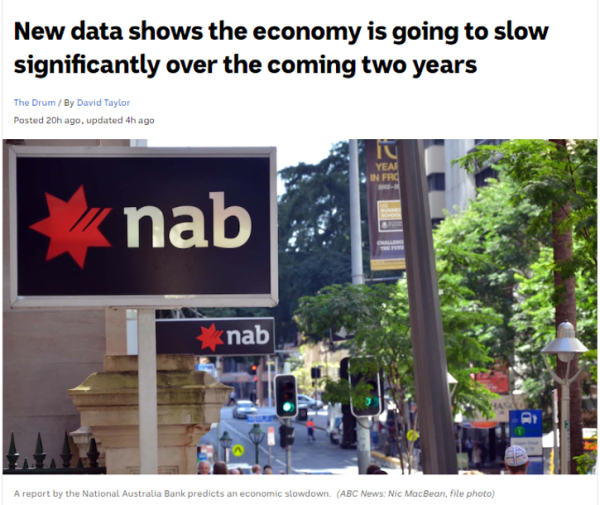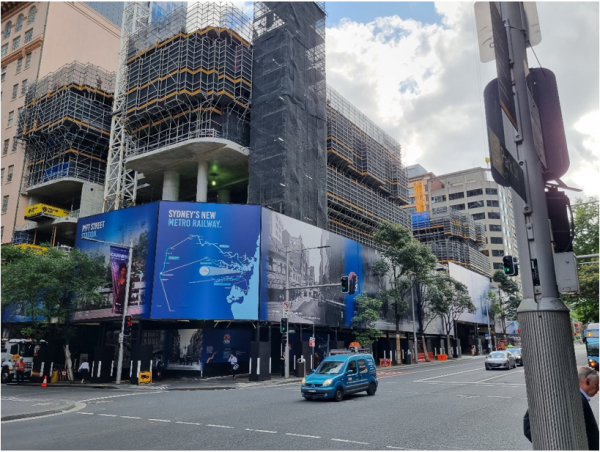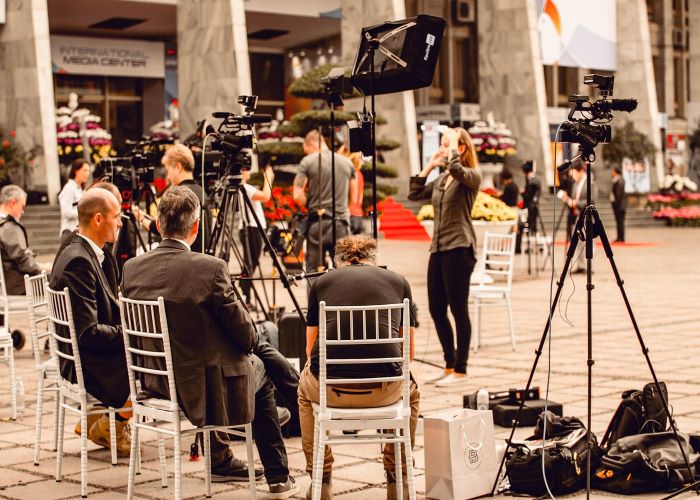If you would like to receive weekly updates like this, sign up here.
Nothing beats getting down and dirty in this business.
My itinerary this month included a few days in the heart of the Sydney business district.
I decided to set aside some time and really take a close look at what’s happening there.
After all, Sydney is still regarded as the number one capital city in Australia.
Even though it’s not actually the capital, which is Canberra, where I reside.
I must tell the truth. What I saw with my own eyes was way different to what I had been led to believe about the state of the world right now.
I admit that I came away from this trip with a real sense of confusion.
Something right now in the world isn’t lining up with the narrative in the papers Maybe you are confused as I am. I mean, we are supposed to be approaching a major recession, correct?
Well, read on to find out what I saw during my trip that helped me figure out what is going on.
Would you still buy caviar in a recession?
In recent weeks, I have seen more and more opinion pieces predicting a recession, both in Australia and overseas.
For example, here is a recent article from the ABC Australia web site:
 Source: ABC News
Source: ABC News
The National Australia Bank published its Forward View on the economy on Wednesday and it was sobering reading.
“On GDP we now expect growth to slow to below 1.0 per cent over the next two years,” NAB noted.
“This includes some very soft quarterly growth in the back end of 2023 and is well below trend growth of around 2.25-2.5 per cent.”
Specifically, the bank forecasts the economy (real GDP) will grow at 0.8 per cent in 2023, and 0.9 per cent in 2024.
A slowing in the retail sector as shoppers tighten their purse strings will be, the bank thinks, the main driver of this growth funk.
NAB keeps track of retail spending, and in a separate report — NAB Monthly Data Insights October — revealed, “consumer spending softened in October, down 0.3 per cent, ending a run of nine months of positive growth”.
Interesting. But for me, it always comes down to what “isn’t” said that is of most importance.
The bank tracks retail spending and that’s slowing apparently. But my question is: what kind of retail spending is slowing?
It took me a long time to get myself out and around the Sydney CBD due to the sheer number of people there.
And one the main reasons was I had to navigate past the long line ups to get into the Versace, Gucci, Cartier, Chanel, Louis Vuitton, and Hermes stores, just to name a few.
Seriously, they were lined up to the edge of the next block!
Are NAB monitoring that segment of retail spending?
I mean, the Westfield shopping centre was crawling with people anyway. And almost all had a carry bag with a designer name on it in their hands too.
Has anyone from the NAB office responsible for this report ever, you know, gone shopping themselves?
Further on in this article I found the following:
Chief economist Shane Oliver has placed a 40 per cent chance of the economy slipping into recession, which it describes as a “high” chance.
The Reserve Bank has maintained for many months now that the economic wild card is how shoppers ultimately respond to the higher cost of fuel, energy, and food prices, as well as rising interest rates.
Now, they lost me when they opened the article “Chief economist…” but you don’t need to feel the same.
And they certainly have identified key and real pain points for most residents in Australia right now.
But, if you ask me, I think I have seen the response of shoppers with my own eyes.
I don’t recall if I spotted a shopper slowdown during my time in Sydney.
But, as you know, when you take to the streets and wander, eventually one must sit down, eat and recharge.
Only, that’s not as easy as it sounds. For starters, you couldn’t find a seat anywhere!
That’s right, hospitality is booming in Sydney as well.
I went to at least half a dozen restaurants while I was there, including a very exclusive revolving restaurant called O Bar.
And if my wife didn’t book it a whole three months ahead of time, we wouldn’t have gotten a table. There were people everywhere eating and having a merry time.
This is a place where if you leave after finishing a 3-course meal with any change from $500 then the waiter hasn’t added up your bill correctly.
But it isn’t even that example that stood out. We visited a wood fired Italian pizzeria on Pitt Street in the middle of the CBD one night.
On the menu was, of course, various pizzas. But we could also order three distinct types of caviar!
In a pizza shop!
And the chalk board that showed their dessert menu went from the ceiling to the floor such was the selection on offer.
This is a sign of extravagance, people. Which is a defining feature of the second more speculative half of the 18.6-year Real Estate Cycle.
Can you see how my confusion about what I was seeing on the ground and what I’m supposed to believe from the experts just isn’t adding up?
If we are heading for, indeed actually in, an economic recession then someone needs to explain to 5 million Sydneysiders on how they are “supposed” to react.
All this infrastructure building can only mean one thing.
The working definition of a recession is this: two or more consecutive quarters of below average growth.
Now, to my simple way of thinking, it’s a nice way to explain things. I am not the sharpest tool in the shed.
Thus, to my mind, there is no way possible for anyone to know we are currently in a recession until the last two quarters of economic data is in.
Much less come out and say a recession is coming soon, like the NAB is doing.
Does this mean, if recession is announced today, then a waiter will come across to my table at the pizzeria and remove my newly ordered caviar from my hands?
Or Cartier or Hermes suddenly close their doors?
I can’t fathom how higher costs of energy, fuel, food prices and rising rates, all true mind, and the utter rejection of any semblance of belt tightening given what I just witnessed in Sydney are nothing but mutually exclusive?
Here is yet another clue as to what’s happening.
I needed to wait for the traffic to subside to get this photo. Traffic which incidentally saw every second car a Mercedes, every third car a Porsche and the odd Bentley thrown in.
 Source: Author
Source: Author
This is a section of the new underground cross city rail project. What you see here is the new Pitt Street metro station.
It’s huge, and one of several across the CBD.
There were hundreds of construction workers scrambling all over the place too. Including near the local Starbucks where I (once again) needed to wait to put in my order.
I couldn’t see the counter around all the hi-vis vests and hard hats!
Let me be clear: Sydney…is…booming.
And I trust by now you are aware of where exactly the gains, once they manifest, of all this type of infrastructure building is going to end up?
There is not a single red flag anywhere in the busiest city in the country of any systemic issues regarding peoples spending habits or businesses being under pressure.
I ask you: what can you believe? It’s not a trick question. I simply ask you to stop, look and listen to what you see happening around you.
Pretend you have zero idea what financial media have written, and simply ask yourself “Do things look bad, or good?”
I’m well versed in what the world around me is “supposed” to look like, I know what certain media outlets want me to “think” and “feel” about myself, my family and financial future.
From my point of view, here is what I found.
It looks totally like the real estate cycle is absolutely on track.
I know this because I learnt about the cycle here: with the Boom Bust Bulletin (BBB).
It will teach you the history of the 18.6-year Real Estate Cycle, why it continues to repeat over and over again and the unique opportunities the cycle presents as it turns.
There is nothing I saw or heard whilst in Sydney that aligns with the repeated stories of doom and gloom I’m constantly bombarded with in the news.
Nothing.
I was standing in the middle of the most important city in Australia, I know what I saw, heard, and experienced.
I can say with no word of a lie that only one thing explains this.
We must be entering boom times. You simply can’t rely on what’s in the financial press to help you work out what’s really going on, let alone with your investments.
But you can with the BBB because it is based on the over 200-year history of the 18.6-year real estate cycle and how it repeats time after time.
So, don’t wait. Take the information from the likes of economist Shane Oliver and the NAB Forward view of the economy report and use the BBB to turn these disparate pieces of information…into knowledge.
Knowledge that teaches you and your family how to win.
Best wishes,

Darren J Wilson
and your Property Sharemarket Economics Team
P.S. – If you would like to receive weekly updates like this, sign up here.
P.P.S – Find us on Twitter here and go to our Facebook page here.
This content is not personal or general advice. If you are in doubt as to how to apply or even should be applying the content in this document to your own personal situation, we recommend you seek professional financial advice. Feel free to forward this email to any other person whom you think should read it.



